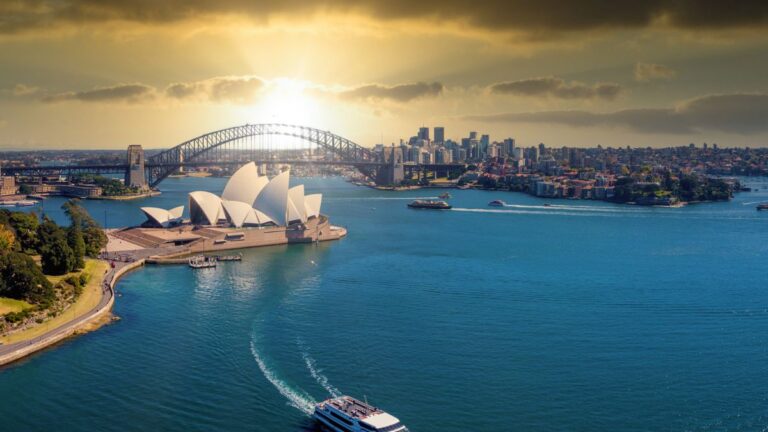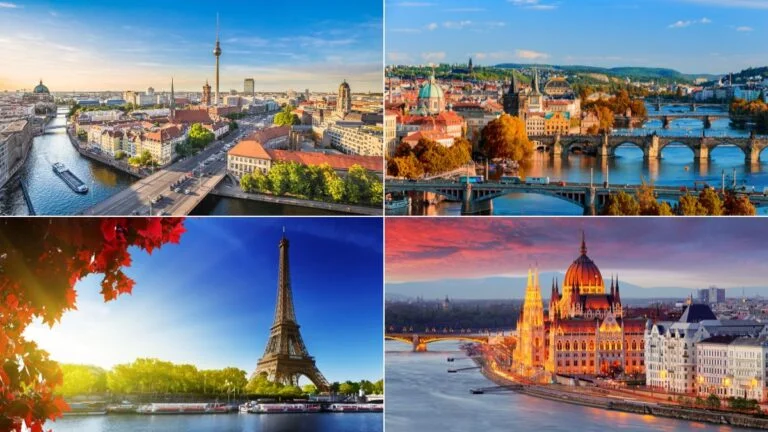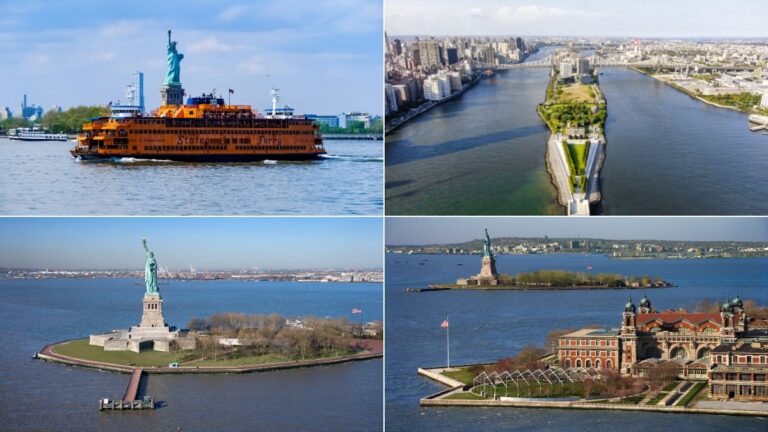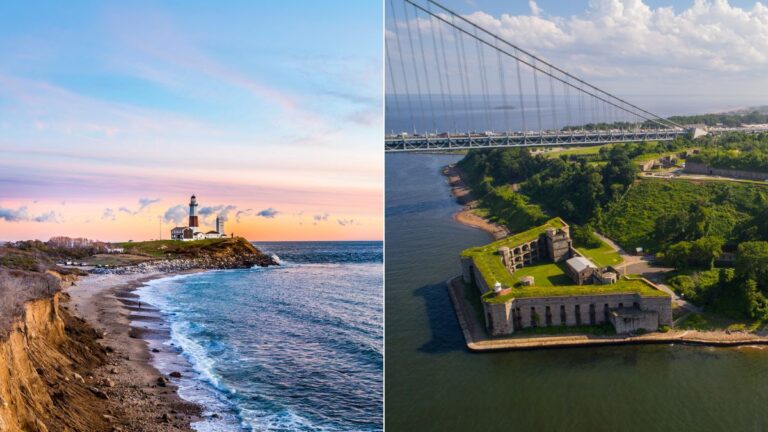50 Facts About Canada You Need to Know Before Traveling There
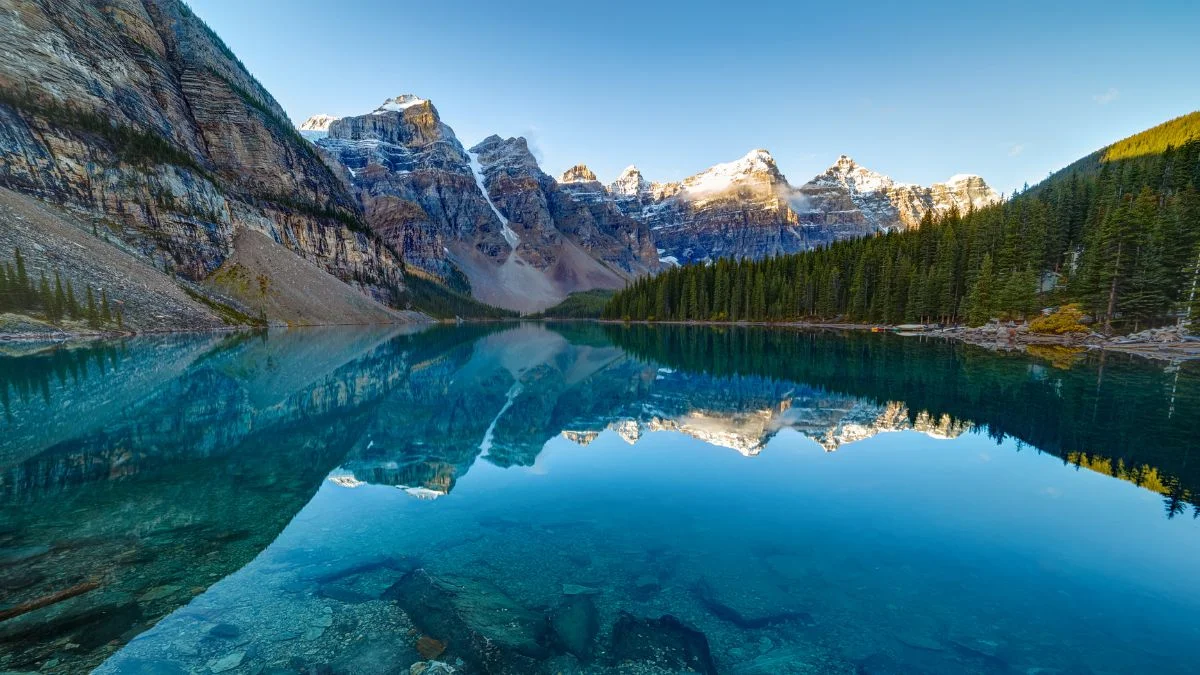
As participants in Amazon Associates and other programs, we earn from qualifying purchases. This comes at no additional cost to you. For more details, see our Affiliate Disclosure.
Embarking on a journey to Canada, a land of vast landscapes, vibrant cities, and a mosaic of cultures, is an adventure that promises the discovery of the unexpected and the awe-inspiring. Before you pack your bags and set off to explore the world’s second-largest country, there’s a treasure trove of facts you need to know. From the majestic Rocky Mountains and the pristine waters of the Great Lakes to the rich tapestry of Indigenous heritage and the culinary delights that span coast to coast, Canada is a country that captivates the heart of every traveler. To fully embrace the Canadian experience, we’ve compiled a list of 50 essential facts about Canada that will enrich your journey, enlighten your understanding, and ensure that your Canadian adventure is as smooth and enjoyable as possible.
Canada’s Official Bilingual Status
Canada’s commitment to bilingualism is deeply rooted in its history, reflecting the nation’s dual heritage of English and French. This official status means government services, legal proceedings, and public education are available in both languages across the country, fostering an environment of inclusivity and respect for linguistic diversity.
The Maple Leaf: Canada’s Symbol
The maple leaf is not just a part of Canada’s flag; it’s a symbol of the nation’s identity, representing peace, unity, and nature. The emblem, adopted officially in 1965, is seen on military uniforms, government logos, and national organizations, encapsulating the spirit and natural beauty of Canada.
World’s Longest Coastline
Canada’s coastline stretches over 202,080 kilometers, the longest of any country in the world. This vast expanse offers a stunning array of ecosystems, from the rugged cliffs of the Atlantic provinces to the temperate rainforests of the Pacific coast, showcasing Canada’s geographical diversity and natural beauty.
Home to the World’s Largest Lakes
Canada’s freshwater heritage includes some of the largest lakes globally, such as the Great Lakes and Great Bear Lake. These water bodies are not only crucial for the environment and biodiversity but also for the cultural and recreational life of Canadians, offering countless opportunities for water-based activities.
Indigenous Peoples’ Rich Heritage
The Indigenous peoples of Canada, including the First Nations, Inuit, and Métis, hold a profound connection to the land with a rich heritage that predates European colonization. Their languages, traditions, and practices contribute significantly to Canada’s cultural mosaic, enriching the national identity.
The Northern Lights
The aurora borealis, or Northern Lights, is a breathtaking natural phenomenon best viewed from Canada’s northern regions. This dazzling display of lights dancing across the night sky draws visitors from around the globe, offering a unique glimpse into the natural wonders of the Arctic.
Poutine: A Culinary Staple
Poutine, a beloved Canadian dish originating from Quebec, combines fries, cheese curds, and gravy into a comforting and savory meal. This culinary staple has gained international fame, symbolizing Canadian innovation in comfort food and the country’s affection for hearty, welcoming dishes.
Canada’s National Parks
Canada’s national parks are gateways to some of the most spectacular landscapes on the planet, from the mountainous terrains of Banff to the rugged coastlines of Gros Morne. These protected areas not only preserve natural heritage but also offer endless outdoor adventure opportunities for visitors and locals alike.
The Iconic Royal Canadian Mounted Police
The Royal Canadian Mounted Police (RCMP), with their distinctive red serge uniforms and wide-brimmed hats, symbolize Canadian tradition and the rule of law. Known affectionately as “Mounties,” they embody a unique blend of historical significance and modern policing, recognized worldwide.
Hockey: Canada’s Game
Hockey is more than a sport in Canada; it’s a national pastime that unites communities and ignites national pride. From frozen ponds to professional arenas, hockey is ingrained in Canadian culture, celebrating the country’s love for competition, teamwork, and icy winters.
The Canadian Rockies
The Canadian Rockies are a majestic mountain range stretching from British Columbia to Alberta, offering some of the world’s most stunning alpine scenery. They are a haven for outdoor enthusiasts, providing a backdrop for hiking, skiing, and wildlife viewing, encapsulating Canada’s rugged natural beauty.
The CN Tower
Toronto’s CN Tower, once the world’s tallest freestanding structure, is a marvel of modern engineering and a symbol of Canadian ingenuity. Its SkyWalk offers breathtaking views of the city and Lake Ontario, making it a must-visit landmark for anyone exploring Canada’s urban landscapes.
Canadian Currency Features Unique Symbols
Canadian currency is adorned with symbols reflecting the nation’s history, culture, and natural landscapes. From the iconic maple leaf to the depiction of important historical figures, each coin and banknote tells a story of Canada’s heritage and values.
The Montreal Jazz Festival
The Montreal International Jazz Festival is a testament to Canada’s vibrant cultural scene, attracting musicians and fans worldwide. This annual event showcases a diverse range of jazz styles, cementing Montreal’s reputation as a global music capital and a hub for artistic expression.
The Invention of Basketball
Basketball, a sport that has gained worldwide popularity, was invented in 1891 by Canadian James Naismith. This contribution to global sports culture underscores Canada’s role in fostering innovation and promoting physical education and teamwork across borders.
The UNESCO World Heritage Sites
Canada’s UNESCO World Heritage Sites, ranging from the historic district of Old Quebec to the stunning natural beauty of the Canadian Rocky Mountain Parks, reflect the country’s rich cultural and natural heritage. These sites are protected for their universal value to humanity, showcasing the diversity and history of the Canadian landscape.
The Historic Site of Quebec City
Quebec City’s historic district, a UNESCO World Heritage Site, captures the essence of French colonial history in North America. With its fortified walls, cobblestone streets, and European charm, it offers a glimpse into the past and a unique cultural experience within Canada.
The Polar Bear Capital of the World
Churchill, Manitoba, known as the Polar Bear Capital of the World, offers unparalleled opportunities for wildlife viewing. Each year, visitors flock to this northern community to observe polar bears in their natural habitat, highlighting Canada’s commitment to conservation and the importance of its Arctic regions.
The Importance of Tim Hortons
Tim Hortons, a Canadian coffee chain, has become a symbol of Canadian identity and community life. Known for its coffee and doughnuts, “Tim’s” is a gathering place for Canadians from all walks of life, embodying the country’s love for hockey, friendliness, and warmth.
The Unique Flag of Nunavut
Nunavut’s flag, representing Canada’s newest territory, features symbols of the Inuit culture and the Arctic environment. Its design reflects Nunavut’s unique status within Canada, its people’s heritage, and the vast, unspoiled landscapes of the North.
The Cultural Mosaic
Canada’s identity as a cultural mosaic celebrates the diversity of its people, from the Indigenous populations to immigrants from around the world. This approach to multiculturalism fosters a society where various cultural identities are respected and contribute to the nation’s rich fabric.
The War of 1812
The War of 1812, fought between Britain and the United States, played a crucial role in shaping Canada’s national identity. This conflict solidified the boundaries of Canada and fostered a sense of unity and resilience among its people, laying the groundwork for the nation’s future.
The Rideau Canal
Ottawa’s Rideau Canal, a UNESCO World Heritage Site, transforms into the world’s largest skating rink in the winter. This historic waterway, built in the early 19th century, is a testament to Canadian ingenuity and the country’s love for outdoor winter activities.
Canadian Inventions: The Snowmobile
The snowmobile, an invention crucial to winter life in Canada, reflects the nation’s spirit of innovation and adaptation to its cold climate. This vehicle has become essential for recreation and transportation in snowy regions, underscoring Canada’s relationship with its winter landscape.
The Underground Railroad
The Underground Railroad, a network of secret routes and safe houses, helped enslaved African Americans escape to freedom in Canada in the 19th century. Canada’s role as a safe haven during this period is a proud part of the nation’s commitment to freedom and human rights.
The World’s Highest Tides
The Bay of Fundy, located between New Brunswick and Nova Scotia, experiences the world’s highest tides, a natural phenomenon that attracts scientists and tourists alike. This unique marine environment showcases the power of nature and the beauty of Canada’s Atlantic coastline.
Multicultural Cities
Canada’s cities are celebrated for their multicultural diversity, with Toronto, Vancouver, and Montreal often cited as exemplars of urban cultural pluralism. These cities offer a mosaic of communities, each contributing their own traditions, cuisines, languages, and festivals, enriching the urban tapestry and providing residents and visitors alike with a global experience.
The Significance of the Beaver
The beaver, an industrious rodent once central to Canada’s fur trade, is a national symbol of hard work and perseverance. This emblematic animal, featured on the nickel and associated with the country’s economic history, embodies the spirit of survival and adaptation in the vast Canadian landscape.
The Expansive Boreal Forest
Canada’s boreal forest, one of the world’s largest intact forest ecosystems, stretches across the country’s northern regions. This critical habitat for wildlife, a significant carbon sink, and a source of renewable resources, highlights Canada’s natural wealth and its role in global environmental stewardship.
The Origin of the Name “Canada”
The name “Canada” derives from the Iroquois word “kanata,” meaning village or settlement. This etymology reflects the country’s Indigenous roots and the early interactions between Indigenous peoples and European explorers, laying the foundation for Canada’s identity as a nation of communities.
Celebrating Thanksgiving in October
Canadian Thanksgiving, celebrated on the second Monday in October, is a time for giving thanks for the harvest and blessings of the past year. Distinct from its American counterpart, this holiday combines English and European harvest traditions with the country’s own history, reflecting Canada’s agricultural heritage and spirit of gratitude.
The Legacy of Terry Fox
Terry Fox, a Canadian athlete and cancer research activist, became a national hero through his Marathon of Hope, a cross-country run to raise funds and awareness for cancer research. His legacy, commemorated by annual Terry Fox Runs across Canada, embodies the country’s values of courage, determination, and altruism.
The Festivity of Canada Day
Canada Day, celebrated on July 1st, marks the anniversary of the Confederation in 1867 when the British North America Act united three colonies into a single country called Canada. This national holiday is characterized by fireworks, concerts, barbecues, and patriotic displays, celebrating the country’s history, culture, and achievements.
The Tradition of Ice Wine
Ice wine, a type of dessert wine produced from grapes that have frozen while still on the vine, is a testament to Canada’s innovative winemaking and its cold climate. Ontario’s Niagara Peninsula, renowned for its ice wine, highlights this unique contribution to the world of viticulture, combining traditional techniques with a distinct Canadian twist.
The Bay of Fundy’s Tidal Phenomenon
The Bay of Fundy, famous for having the highest tidal range in the world, showcases a remarkable natural phenomenon that attracts scientists and tourists. The tide can rise up to 16 meters, creating a dynamic coastal landscape that supports rich biodiversity and offers unique experiences like tidal bore rafting and fossil exploration.
The Distinct Seasons
Canada’s four distinct seasons shape the country’s cultural and recreational life, from the vibrant fall foliage and springtime blooms to the snowy landscapes of winter and warm summers. Each season brings its own set of traditions, activities, and beauty, reflecting the country’s adaptation to and appreciation for the changing climate.
The Loonie and Toonie
The “Loonie” and “Toonie,” colloquial terms for Canada’s one- and two-dollar coins, respectively, are symbols of Canadian ingenuity in currency design. The Loonie, named for the loon depicted on its reverse, and the Toonie, recognized for its bi-metallic composition, represent the practical and cultural aspects of Canadian money.
The Innovation of Insulin
The discovery of insulin in 1921 by Canadian scientists Frederick Banting, Charles Best, and their colleagues at the University of Toronto is one of Canada’s most significant contributions to medicine. This breakthrough has saved millions of lives worldwide, underscoring Canada’s role in medical research and innovation.
The Famous Canadian Mounties
The Royal Canadian Mounted Police (RCMP), known for their ceremonial red serge uniforms, are emblematic of Canadian law enforcement and national identity. The Mounties’ storied history, encompassing national security, community policing, and cultural representation, makes them an enduring symbol of Canadian values and traditions.
The Thrill of the Calgary Stampede
The Calgary Stampede, billed as “The Greatest Outdoor Show on Earth,” is a ten-day event that celebrates Western Canadian heritage, culture, and community spirit through rodeo competitions, concerts, parades, and agricultural exhibits. This festival attracts visitors worldwide, showcasing Alberta’s vibrant traditions and hospitality.
The Mystery of the Ogopogo Monster
The Ogopogo, a legendary sea monster said to inhabit British Columbia’s Okanagan Lake, captures the imagination and folklore of Canada. Tales of this elusive creature, similar to Scotland’s Nessie, contribute to the country’s rich tapestry of myths and legends, reflecting the mystery and allure of Canada’s natural landscapes.
The Historic Victory of the 1972 Summit Series
The 1972 Summit Series, a historic ice hockey competition between Canada and the Soviet Union, is remembered as a pivotal moment in sports history and national pride. This series, culminating in Canada’s dramatic victory, showcased the country’s passion for hockey and its standing on the international sports stage.
The Charm of Old Montreal
Old Montreal, with its historic architecture, cobblestone streets, and vibrant cultural scene, embodies the city’s European heritage and cosmopolitan flair. This historic district, a popular destination for both locals and tourists, offers a glimpse into Montreal’s rich history and its role as a cultural hub in Canada.
The Wilderness of the Yukon
The Yukon, known for its rugged landscapes, pristine wilderness, and the Klondike Gold Rush history, represents the adventurous spirit and natural beauty of Canada’s far north. This territory offers unparalleled opportunities for outdoor exploration, wildlife viewing, and experiencing the Northern Lights, showcasing the untamed beauty of the Canadian wilderness.
The Artistic Legacy of the Group of Seven
The Group of Seven, a collective of Canadian landscape painters active in the early 20th century, played a pivotal role in developing a distinct Canadian art form. Their depictions of Canada’s wilderness, from the rugged shores of the Atlantic to the dense forests of Ontario, capture the essence of the country’s landscapes and have left an indelible mark on Canadian cultural identity.
The Influence of Canadian Music
Canadian music, spanning genres from folk and rock to pop and hip-hop, reflects the country’s cultural diversity and artistic vitality. Artists like Leonard Cohen, Joni Mitchell, and Drake have achieved international acclaim, showcasing Canadian talent on the global stage and contributing to the country’s rich musical heritage.
The Technological Hub of Waterloo
Waterloo, Ontario, is recognized as Canada’s technological hub, home to universities, research institutions, and startups that drive innovation in fields like software development and quantum computing. This concentration of tech talent and entrepreneurship underscores Canada’s role in the digital age and its commitment to fostering innovation and education.
The Spectacle of Niagara Falls
Niagara Falls, one of the world’s most awe-inspiring natural wonders, straddles the border between Canada and the United States. This magnificent waterfall, a source of hydroelectric power and a symbol of natural beauty, attracts millions of visitors each year, offering an unforgettable experience of the power and majesty of nature.
The Tradition of the Stanley Cup
The Stanley Cup, awarded annually to the National Hockey League’s championship team, is the oldest professional sports trophy in North America. This iconic trophy, deeply embedded in Canadian culture and history, celebrates the nation’s love for hockey and its role in popularizing the sport worldwide.
The Peacekeeping Nation
Canada’s reputation as a peacekeeping nation is founded on its historical contributions to United Nations peacekeeping missions around the globe. This commitment to international peace and security, dating back to the Suez Crisis in 1956, reflects Canada’s values of diplomacy, human rights, and global cooperation, solidifying its standing as a compassionate and constructive force on the world stage.

